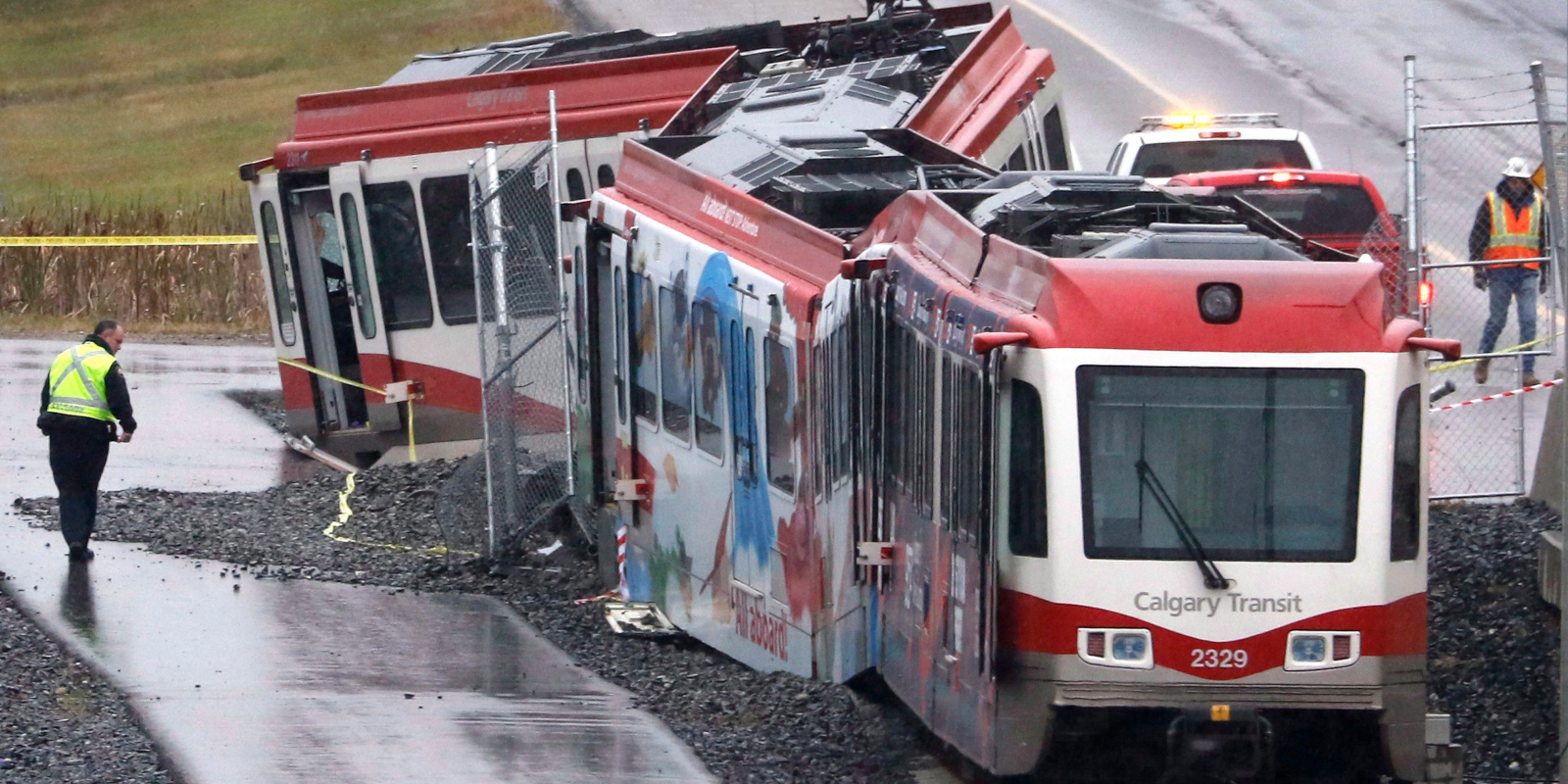At A Glance
- Expanding transit systems in Canada can take far longer than the same process in European Union member states like Denmark and the Netherlands.
- “One of the factors is politics, and another related factor is what kind of transit are we building?” says Shelagh Pizey-Allen of TTCriders.
- Some experts say the prevalence of NIMBY (Not-In-My-Backyard) sentiment is a significant impediment to building new infrastructure within cities.
Canadian governments of every partisan stripe in all parts of the country ambitiously plan to expand public transit in the name of climate change and quality of life. There are just a few challenges: building public transit like above-ground rail and subways in Canada is enormously expensive and takes decades to complete.
Well-developed public transit is certainly not absent from Canada. Montreal, Toronto, and Vancouver placed within the top 10 of Business Insider’s 2017 ranking of North America’s best transit systems.
However, expanding transit systems in Canada can take far longer than the same process in European Union member states like Denmark and the Netherlands.

In 2021, the City of Winnipeg announced a public transit “master plan”, which entailed building a massive new network of rapid transit corridors. However, the corridors will only feature buses and are slated to take 25 years to complete.
The O-Train, Ottawa’s Light Rapid Transit service, has been plagued with issues in recent years, most notably a derailment in 2021.
In Edmonton, structural issues to the still-under-construction LRT line connecting to the southeast area of the city have now delayed the already-delayed project indefinitely. The $1.8 billion line was initially approved in 2009.
Toronto’s Eglinton Crosstown LRT line was approved in 2011 and originally slated for completion by 2020, but is still under construction with 2023 fast approaching and has gone over budget by hundreds of millions of dollars.
Shelagh Pizey-Allen of TTCriders, a Toronto public transit advocacy group, says there is no single reason for the often decades-long process of building a new subway line in the city.
“One of the factors is politics, and another related factor is what kind of transit are we building?” says Pizey-Allen. “Transit that is very deep underground is much more expensive and there are a few other factors.”
According to Hub contributor Chris Spoke, the politicization of transit proposals, often tied to the choice of construction, is a major source of disruption for such projects.
Spoke says the political will to push past local opposition is required if higher levels of government want to see new transit built.
“You need to depoliticize it, which probably needs a higher level of government,” says Spoke. “We just need a province that is willing to do it. We could do it by next week, but that’s obviously a political question.”
Kyle Owens, president of Functional Transit Winnipeg, says eagerness by people and governments to unveil signature projects often results in approving them without proper consideration for the costs.
“Everybody loves a ribbon-cutting…but it is very difficult to commit financially to those projects because of the resources involved,” says Owens. “The solution for a lot of municipalities is to just spread out that investment to extend the timeline so they never really need to make a significant commitment early on but they can still get the benefits of having approved the project.”
The Eglinton Crosstown LRT has attracted criticism from residents along the planned route. Many of these critics also oppose building denser housing in their neighborhoods, as well as the potential loss of a local Tim Hortons due to LRT construction, stating it would be a major loss to the community.
Spoke says the popular choice of “cut and cover”, the process of digging up road surfaces to build shallow transit lines before covering it back up, is more efficient than tunneling at deeper depths but attracts more opposition from locals.
The Ontario Line, a 15-stop subway line unveiled by Premier Doug Ford in 2019, has been criticized by local residents along its planned route. One city councillor declared the line would resemble the U.S. military’s Guantanamo Bay Detention Centre if trees along its route were removed during construction.
Stephen Wickens, a transportation researcher, says such opposition can push transit planners into favouring submerged, deep-tunnel boring over the more efficient cut-and-cover method.
Both Wickens and Spoke say the prevalence of NIMBY (Not-In-My-Backyard) sentiment is a significant impediment to building new infrastructure within cities.
“There has always been NIMBYism in the cities, people who’ve objected to the messes and the expropriation of properties,” says Wickens. “But people seem less willing to sacrifice on the level of people of that generation that endured the Great Depression and fought World War II.”
Shelagh Pizey-Allen says there are more impediments to building new transit than just NIMBYism, such as the reliance on the Public-Private Partnership (P3) model for building infrastructure.
“They’re supposed to transfer cost overruns and the cost of delays onto the private sector, that hasn’t been borne out with Eglinton Crosstown,” says Pizey-Allen.
Premier Ford’s Ontario Line, whose construction was awarded to a private consortium on November 17, is projected to possibly cost nearly $20 billion, a growth of 70 percent in unforeseen budgetary increases. Wickens says the P3 model results in the unforeseen costs of such lengthy projects being transferred to taxpayers and future elected governments.
“I’d argue every subway ever built in the non-communist world was a public-private partnership in some form, but what we now narrowly consider P3s are failing, at least in Ontario,” says Wickens.
Furthermore, Wickens says the budget planning process in Ontario is opaque and harms public trust in those responsible for building transit.
“When we let costs get out of control and we don’t make the line-by-line accounting open, transparent, and easy to understand…we undercut the competitiveness of our cities economically and in terms of livability,” says Wickens.
Owens says investing in better service within existing transit systems is necessary to increase public enthusiasm for more public transit.
He argues that although Winnipeg’s physical transit infrastructure, which currently features only buses, was improved last year, the service quality remained largely unchanged due to the number of buses remaining the same.
“Without building a network, building a single piece of a chain does not connect anything, if I can mix metaphors there,” says Owens. “We felt this was a case of investing too much money in a single line, and not investing in the network itself.”
Apartment and condominium towers continue to spring up across Canada’s largest cities as the population rapidly grows, but the construction of public transit is not keeping up. For a country where most levels of government are vocally committed to a more sustainable future, constructing public transit seems like an obvious choice.
Yet instead of cheap and abundant public transit, Canada’s major urban centres have gotten arguments over construction methods, ballooning costs, and indefinite delays.
Recommended for You

Ontario’s auto era is over

‘Those costs are likely to grow’: How Pierre Poilievre’s budget letter signals a new deficit spending consensus

DeepDive: How Canadian childcare became politically untouchable

The virtues underpinning Western society are under attack—how worried should we be? The Hub debates




